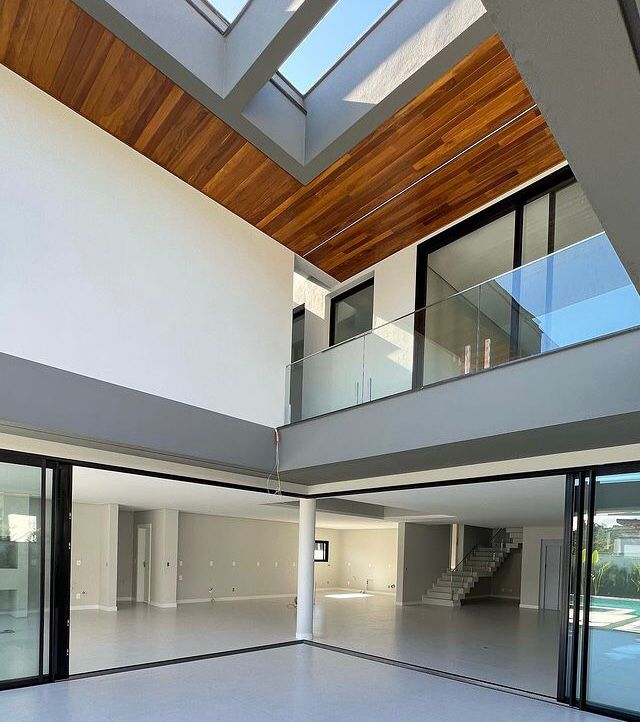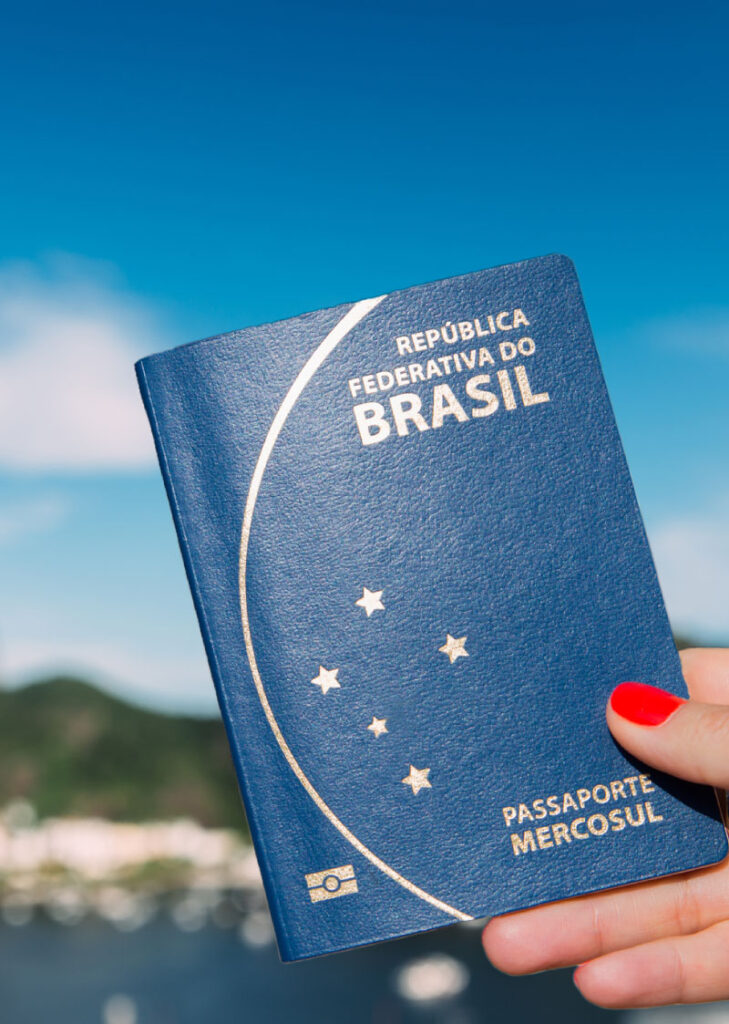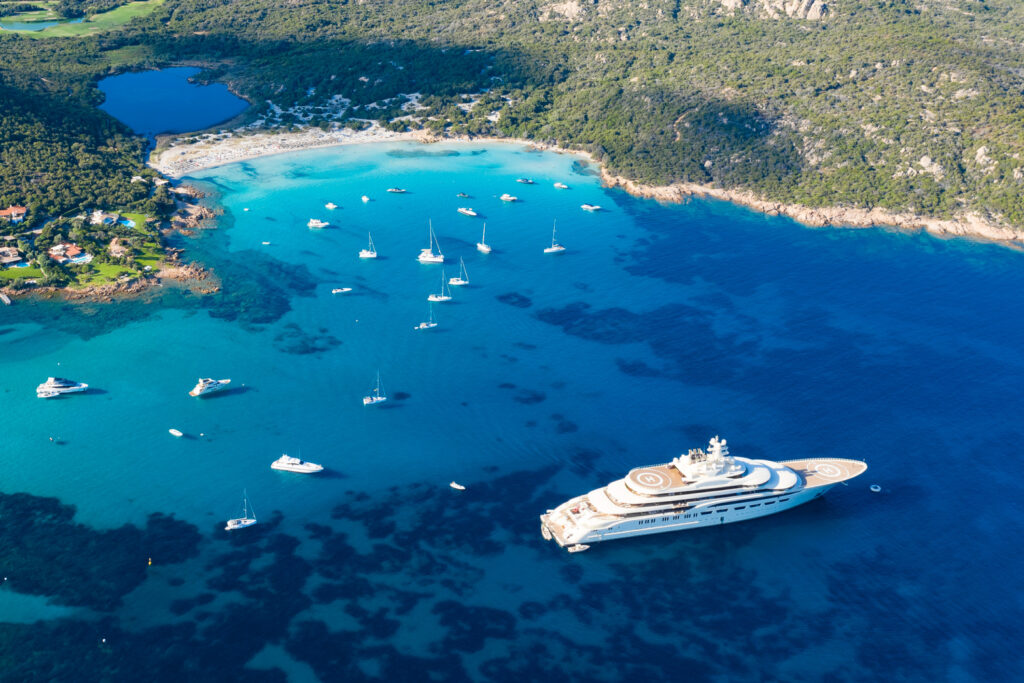Rio de Janeiro, one of Brazil’s most famous and vibrant cities, is a symbol of the country’s culture, history and natural beauty. World-renowned for its beautiful beaches, exciting carnivals and stunning natural landscapes, the city attracts millions of tourists from all over the world every year. In addition to its tourist attractions, Rio de Janeiro is also one of Brazil’s important economic, cultural and historical centers, playing a major role in shaping the country’s national identity.
Geographically, Rio de Janeiro is located in the southern part of Brazil, on the Atlantic coast. Due to its unique location, the city has a unique combination of mountainous landscapes, tropical forests and sandy beaches, creating an unparalleled landscape. Rio de Janeiro has a population of over 6.7 million, making it the second most populous city in Brazil and playing a vital role in the country’s urban and cultural structure. With this introduction, we will continue to examine the history, culture, economy and tourist attractions of this thriving city to provide a comprehensive picture of Rio de Janeiro.
History of Rio de Janeiro
Rio de Janeiro has a rich and turbulent history that has been shaped since its discovery by Europeans. The city was discovered in 1502 by Portuguese explorers and named after their arrival in the month of January (Janeiro in Portuguese) and the river-like appearance of the mouth of a bay, Rio de Janeiro (meaning January River). Of course, the area is actually a large bay, not a river. Initially, the area was considered for its strategic location, but due to the presence of dense rainforest and tropical diseases, it did not develop quickly.
During the colonial era, Rio de Janeiro served as an important port for the Portuguese, facilitating trade routes with Africa and Europe. The city’s economic and political importance grew with the increase in the sugar trade and later coffee. In 1763, Rio de Janeiro became the capital of the Portuguese colony in South America, a position it held until 1860. This period was a turning point in Brazilian history, as it saw the city become a center for political, economic, and cultural affairs.
After Brazil’s independence in 1822, Rio de Janeiro remained the country’s capital and underwent extensive changes. It acquired a more modern urban structure, numerous government and cultural buildings were built, and the population grew rapidly. In the 20th century, the city became known as a center for art, music, and sports, and the Rio de Janeiro Carnival became a global symbol of Brazilian culture. Although the capital was moved to Brasília in 1960, Rio de Janeiro remained the second largest city in Brazil and one of the country’s most important economic and cultural centers.
Today, Rio de Janeiro is a blend of rich history and vibrant culture, evident in its architecture, art, and the daily lives of its people. The city continues to thrive and develop in various fields while preserving its historical heritage, playing an important role in Brazilian history.
Geography and climate of Rio de Janeiro
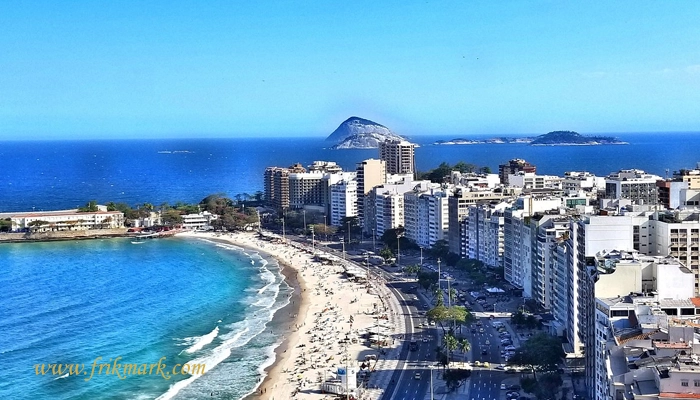
Rio de Janeiro is located in southeastern Brazil on the Atlantic coast. With its unique geographical location, the city is home to a stunning combination of golden beaches, towering mountains, and tropical rainforests. Among the most important natural features of Rio de Janeiro are the famous beaches such as Copacabana and Ipanema, which are known as the main tourist attractions. In addition to the beaches, famous mountains such as Corcovado, which is home to the Christ the Redeemer statue, and Sugarloaf Mountain, which offers a wide view of the city, are natural symbols of this area. Also, parts of the surrounding forests, including the Tijuca Forest, are known as the largest urban forest in the world and have created a lush green cover around the city.
Rio de Janeiro’s climate is generally tropical, with two main seasons: a hot, humid summer season that lasts from December to March, and a mild, dry winter season that lasts from June to September. The city’s average annual temperature typically ranges from 23 to 27 °C. Summers are characterized by high humidity and occasional monsoon rains, while winters are cooler and relatively dry. This climate, combined with its beautiful natural scenery, makes Rio de Janeiro a popular tourist destination year-round.
Rio de Janeiro’s diverse geography and mild climate have had a profound impact on the lifestyle of its people. Rio de Janeiro’s people are passionate about outdoor activities, water sports, and spending time on the beach, and this lifestyle has become part of the city’s culture. The climate and natural landscapes have also made tourism one of the most important economic and social sectors in Rio de Janeiro. The mountains, beaches, and natural parks provide unparalleled opportunities for nature tourism, hiking, and adventure sports, attracting many tourists each year.
Read also: Brazilian language
The culture and people of Rio de Janeiro
Rio de Janeiro is one of the most diverse and colorful cities in Brazil in terms of culture and population. The city is home to various ethnic and cultural groups, including indigenous people, European immigrants, Africans, and Asian groups, each of whom has contributed in their own unique way to the formation of the city’s cultural identity. Rio de Janeiro’s diverse population has made its culture a rich blend of different customs, traditions, and customs that are clearly visible in the daily lives of its people. The city also has a dynamic and young population that is driving cultural and social changes at a faster pace.
One of the most important and well-known celebrations in Rio de Janeiro is the annual Carnival, which is considered the largest street party in the world. This colorful and passionate festival, with samba dancing, colorful costumes and magnificent parades, is a symbol of the joy, culture and history of the Brazilian people. Rio de Janeiro’s Carnival is not only a tourist attraction but also an opportunity to express art, social solidarity and cultural identity. In addition to Carnival, numerous local and religious celebrations are held throughout the year, each showcasing a part of the city’s ancient and modern traditions.
Art, music, and literature play an important role in the cultural life of the people in Rio de Janeiro. Samba music, which has roots in African culture and the indigenous people of Brazil, is very popular in the city and has produced world-famous artists. In addition to samba, other musical styles such as bossa nova and fafa have also flourished in Rio de Janeiro. Visual arts and literature also form an important part of Rio de Janeiro’s culture, and the city is the birthplace of prominent Brazilian artists, writers, and poets. Numerous museums, galleries, and theaters operate in Rio de Janeiro, reflecting the city’s commitment to preserving and developing culture and the arts.
Tourist attractions in Rio de Janeiro

As one of the most popular tourist destinations in the world, Rio de Janeiro has a diverse and unique attractions that attract millions of tourists every year. One of the most famous attractions of the city is its beautiful golden beaches, which play an important role in the daily lives of people and tourists. The beaches of Copacabana and Ipanema are recognized as symbols of the city; Copacabana, with a length of approximately four kilometers, is a good place for water sports, sunbathing and cultural events, while Ipanema is popular for its great waves for surfing and its stylish cafes and restaurants.
Another of Rio de Janeiro’s most iconic landmarks is the famous statue of Christ the Redeemer, perched atop Corcovado Mountain, considered one of the Seven Wonders of the Modern World. With its open arms, the statue symbolizes peace and welcome, and offers a magnificent view of the city. Another of the city’s most famous natural attractions is Sugar Loaf Mountain, whose unique shape and height provide stunning views of Rio de Janeiro and Guanabara Bay, which visitors can reach by cable car.
In addition to its beaches and mountains, Rio de Janeiro has numerous parks and natural areas that appeal to nature lovers and adventure seekers. The Tijuca Forest, the largest urban forest in the world, is an ideal place for hiking, climbing, and wildlife viewing. This protected park provides a peaceful, green space in the heart of the city, and is a popular place for families and nature lovers to relax and unwind.
Culturally, Rio de Janeiro is home to numerous museums and cultural centers that showcase Brazilian history, art, and culture. The Museum of Contemporary Art, the National Museum, and the Cultural Center of the Bank of Brazil are among the places that art and history enthusiasts should not miss. With a variety of programs, exhibitions, and artistic events, these cultural spaces contribute greatly to Rio de Janeiro’s cultural richness and provide a complete experience for tourists.
Economy and economic activities of Rio de Janeiro
Rio de Janeiro is one of the major economic centers of Brazil, playing a key role in the country’s industrial, commercial, and service development. The city’s economy is highly diversified, encompassing oil and gas, petrochemicals, construction, tourism, and financial services. The Port of Rio de Janeiro, one of the largest and most important ports in Brazil, is a hub for domestic and international trade, contributing to the economic growth of the region. In addition, the oil and energy industries in the city’s suburbs, especially in coastal areas, are a major source of employment and income for many people.
Tourism is also a major pillar of Rio de Janeiro’s economy. The city’s natural and cultural attractions, including its famous beaches, world-class carnival, and iconic landmarks, have made Rio de Janeiro a popular destination for millions of tourists, who have directly and indirectly created thousands of jobs. Local markets, handicrafts, and restaurants also make up an important part of the local economy. Despite challenges such as social inequality and infrastructure problems, Rio de Janeiro remains one of the economic hubs of Brazil and the Latin American region, providing diverse job opportunities for residents and immigrants.
Transportation in Rio de Janeiro
Transportation in Rio de Janeiro is of particular importance due to the size of the city and its large population, and various systems have been provided for the movement of people and goods. The public transportation network includes the subway, buses, and taxis, with the subway being recognized as one of the fastest and safest means of transportation within the city. The Rio de Janeiro subway connects the main points of the city with its various lines and is used by millions of people daily. The city’s extensive bus system also provides access to more remote neighborhoods and suburban areas.
In addition to land transportation, Rio de Janeiro’s main air gateway, Galeão International Airport, connects the city with the rest of the world. Santos Dumont Airport, a domestic hub, also facilitates domestic air services. Rio de Janeiro’s active port also helps transport commercial goods and passengers.
Traffic congestion in some urban areas has created challenges that city officials are trying to improve with smart transportation plans and the development of metro lines and bike lanes. Overall, Rio de Janeiro’s transportation system strives to meet the needs of the city’s diverse and dynamic population and contribute to the sustainable development of this metropolis.
Daily life and society in Rio de Janeiro
The daily life of the people of Rio de Janeiro is shaped by a combination of traditional Brazilian culture and modern lifestyle. The people of this city are known for their warmth and hospitality and have a very active and dynamic social atmosphere. Families often spend time together outdoors, especially on the city’s famous beaches, and recreational and sports activities are an important part of their daily lives. Local markets, cafes and restaurants are also places where people go to meet friends and enjoy local cuisine. The people of Rio de Janeiro are interested in music and dance, and the culture of celebration and joy reaches its peak, especially during occasions such as Carnival.
In terms of education, Rio de Janeiro has a relatively advanced primary and secondary education system, with both public and private schools operating in the city. Education is prioritized from an early age, and families pay special attention to the importance of their children’s education. Despite challenges such as social inequality, numerous efforts are underway to improve the quality of education to provide equal opportunities for all.
Sports and entertainment have a very special place in the lives of the people of Rio de Janeiro; football, as the most popular sport, is not only a hobby but also part of the city’s cultural identity. Famous football clubs such as Flamengo and Flamengo are world-famous, and football matches are followed with great passion and excitement. In addition to football, water sports such as surfing and swimming are also popular among the people, and the presence of beautiful beaches has made this possible. The city’s parks and green spaces also host a variety of sports and recreational activities that strengthen the health of the body and soul of the people.
Places to visit in Rio de Janeiro
1. Christ the Redeemer Statue
This huge statue, about 30 meters high, is one of the most famous symbols of Rio de Janeiro and Brazil, located on top of Mount Corcovado. The statue is made of reinforced concrete and soapstone, and its open hands symbolize peace and friendship. Visitors can climb to the top of the mountain by cable car or hiking trails and enjoy panoramic views of the city and Guanabara Bay. The site is also registered on the UNESCO World Heritage List.
2. Copacabana Beach
Copacabana Beach, with a length of approximately 4 kilometers, is one of the most famous and lively beaches in the world. This beach hosts many domestic and foreign tourists who come there for sunbathing, swimming, water sports, as well as attending cultural and artistic events. There are wide promenades along the beach, numerous cafes and restaurants that allow you to experience local and international cuisine.
3. Ipanema Beach
Ipanema is a beautiful and popular beach near Copacabana that offers a more relaxed and luxurious atmosphere. It is a popular spot for families and beach sports enthusiasts due to its white sand, clear water and good amenities. There are also local markets and craft stalls around the area that tourists can visit.
4. Sugarloaf Mountain
Sugarloaf Mountain, or “Pão do Aceh,” is known for its distinctive rock formation. Visitors can take a cable car to the top of the mountain for unparalleled views of the city, the bay, and the Atlantic Ocean. It is one of the most popular spots for photography and sunset viewing in Rio de Janeiro.
5. Tijuca National Park
This urban forest park is one of the largest tropical forests within cities in the world. Tijuca Park is home to a variety of flora and fauna, and has numerous hiking and walking trails. This area offers a great opportunity to escape the hustle and bustle of the city and experience pristine nature in the heart of Rio de Janeiro.
6. Museum of Contemporary Art, Rio de Janeiro (Museum of Modern Art)
Housed in a building with modern architecture, the museum displays a valuable collection of contemporary Brazilian and international art. The museum hosts a variety of permanent and temporary exhibitions and is recognized as an important cultural center in the city.
7. Rio Carnival
Rio de Janeiro Carnival is the world’s largest street festival, held every year in February or March. With colorful dances, samba music, and flashy costumes, the event draws thousands of tourists and locals to the streets, offering a magnificent display of Brazilian culture and joy.
8. Historic Downtown Rio de Janeiro
The historic center of the city consists of old buildings, churches, and squares that are several hundred years old. This neighborhood is a good place to get acquainted with the history and culture of the city and is home to museums, galleries, and traditional cafes. Colonial-era architecture and important historical monuments are visible in this area.
Important tips for tourists in Rio de Janeiro
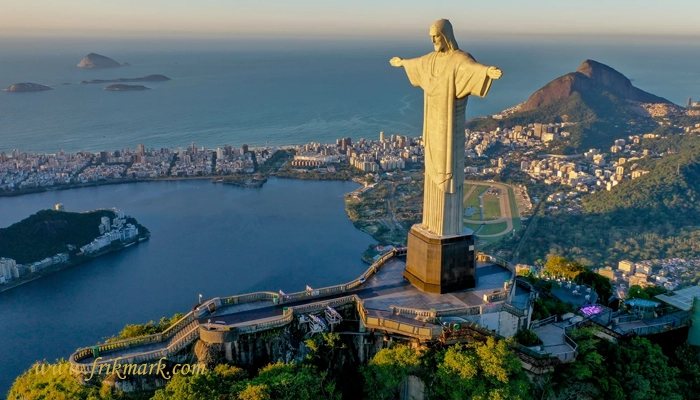
Rio de Janeiro attracts millions of tourists every year with its many attractions, but to have a safe and enjoyable trip, it is essential to pay attention to some points. The first point is to observe security issues; due to the presence of some unsafe areas in the city, tourists should avoid traveling alone at night and not leave their valuables in plain sight. Using official taxis or reputable transportation services and avoiding low-traffic neighborhoods can greatly reduce the risk of unwanted incidents. Also, knowing the emergency numbers and police points in the city can be helpful in times of crisis.
The best time to visit Rio de Janeiro is usually between December and March, which coincides with the summer and carnival seasons. During this time, the weather is warm and sunny, and you can enjoy the beaches and colorful festivals. Of course, it should be noted that this season is a busy time for tourists and costs are usually higher. The autumn and spring seasons are also suitable options for more relaxed trips and nature tourism, with milder and quieter weather.
The guide to accommodation in Rio de Janeiro includes choosing the right neighborhoods to stay in; areas such as Copacabana, Ipanema and Leblon are the most popular choices for tourists due to their proximity to tourist attractions, relative safety and high amenities. In terms of food, Rio de Janeiro has a wide variety of restaurants, cafes and local and international cuisine. Fresh seafood, Brazilian steaks and tropical fruits are among the popular options. Local markets and food courts also provide a good opportunity to experience street food and Brazilian food culture.
Rio de Janeiro Hotels
As one of the world’s major tourist destinations, Rio de Janeiro offers a variety of high-quality hotels that meet the different needs of tourists with different budgets and tastes. Here are some examples of the best hotels in Rio de Janeiro:
1. Fairmont Rio de Janeiro Copacabana
This luxury hotel is located on Copacabana Beach and offers amenities such as an outdoor pool, a well-equipped gym, a variety of restaurants, and rooms with sea views. Professional service and a relaxed atmosphere make this hotel a popular choice for tourists and business travelers.
2. Sofitel Rio de Janeiro Ipanema
Located in the Ipanema district, this five-star hotel offers high-end amenities, modern rooms and easy access to the beach. The hotel’s restaurants offer international and Brazilian cuisine, and the rooftop pool with beautiful views of the city creates an unforgettable experience.
3. Vila Gale Rio de Janeiro Hotel
This hotel is a budget-friendly option for tourists due to its central location and easy access to tourist attractions. Facilities include a restaurant, swimming pool, and gym, and offers good service at a reasonable price.
4. Hilton Rio de Janeiro Copacabana Hotel
Hilton is one of the prestigious global hotel chains that also has a presence in Rio de Janeiro. This five-star hotel with full facilities, stylish rooms, several restaurants and conference halls is an excellent option for business and leisure trips.
5. Hotel Maravilha Rio de Janeiro
This boutique hotel is located in the heart of Rio de Janeiro and offers guests a combination of modern design and amenities. Perfect for those looking to stay in a different and artistic atmosphere.
Also read: Customs clearance in Brazil
Frequently asked questions about Rio de Janeiro
Where is Rio de Janeiro?
Rio de Janeiro is a city in Brazil, located in the southeastern region of the country, on the Atlantic Ocean. It is one of the largest and most important cities in Brazil.
Rio de Janeiro map
Rio de Janeiro is located on the east coast of Brazil, near Guanabara Bay, and is bordered to the south by the Atlantic Ocean. It can be seen on the map of South America in the eastern part of Brazil.
What continent is Rio de Janeiro on?
Rio de Janeiro is located on the continent of South America.
Rio de Janeiro in English
The English name for Rio de Janeiro is written as “Rio de Janeiro” and is pronounced roughly as “Rio de Janeiro”.
Photo of the statue of Christ in Rio de Janeiro
The statue of Christ the Redeemer is one of the famous symbols of Rio de Janeiro, located atop Mount Corcovado and shaped like a man with open arms, a symbol of peace and friendship.
Rio is a city in which country?
Rio (abbreviation of Rio de Janeiro) is a city in Brazil.
Where is the capital of Brazil?
The capital of Brazil is Brasilia, not Rio de Janeiro.
Conclusion
As one of the most important cities in Brazil and the world, Rio de Janeiro holds a special place among the region’s tourist and economic destinations, with a unique combination of stunning nature, rich culture and turbulent history. Famous beaches, prominent urban symbols such as the Christ the Redeemer statue and Sugarloaf Mountain, and world-famous celebrations such as Carnival are all part of the city’s unique identity, attracting millions of people every year. The diverse culture of its people, vibrant lifestyle and economic opportunities have made Rio de Janeiro a vibrant and dynamic city.
The future of Rio de Janeiro is promising; with continued investments in infrastructure, improved transportation systems, sustainable tourism development, and attention to social issues, the city is on track to become a sustainable and smart global hub. Efforts to reduce inequalities and increase the quality of life of its people, while preserving its natural and cultural beauty, will create a bright future for Rio de Janeiro. Overall, Rio de Janeiro is not only an attractive tourist destination, but also a city that combines history, culture, and innovation, with a bright future ahead.

